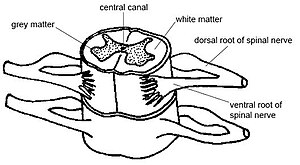
- Image via Wikipedia
The Food and Drug Administration (FDA) will be increasing its push for more research into antibiotics, says FDA Commissioner Margaret Hamburg, because of escalating antibiotic resistance among many, if not most, bacteria that cause infectious disease in humans.
Use of antibiotics is widespread for common colds and ear infections in children, and they are added to chicken and livestock feed which are then consumed by people. The results are whole new populations of antibiotic-resistant bacteria that do not respond to even the most modern antibiotics, turning formerly ordinary infections into life-threatening diseases.
Also, because antibiotics are destructive to the immune system, taking them year after year has weakened the defenses we have to fight these illness and diseases on our own.
Research and development of new drugs is low, and the range of new antibiotics is limited. “We no longer have effective ways to treat serious infectious disease. Clearly we must encourage more judicious use of these important drugs,” Dr. Hamburg said.
The commissioner said that the agency has increased its internal discussions about the antibiotic resistance problem, and is talking to consumer health groups and the food industry about regulations regarding the use of antibiotics in animal feed and new guidelines on the use of antibiotics for patients. The FDA will increase its collaboration with outside groups in academia and government-industry health organizations next year, she said.
Experts have been warning for years that we are heading into a “post-antibiotic world” when antibiotics will no longer work. The World Health Organization calls antibiotic resistance one of the three greatest threats to human health.
Because of the improper use of antibiotics, strains of bacteria that are resistant to antibiotics are now killing hospitals patients around the world. If efforts to combat the problem are not launched now, even more infections that are still curable will make a dangerous comeback. Just like 100 years ago, and thousands of years before that, doctors will be unable to treat a host of common infections.
Here are a couple of relevant ideas:
While the scientists are trying to come up with new antibiotics, we can help avoid illness by maximizing our immune system health and bodily defenses ourselves. A balanced diet of healthy organic foods and regular exercise, along with high-quality vitamin, mineral and herbal supplements, can go a long way to healing and to prolonging health.
Regular Chiropractic treatment also helps fend off illness by maintaining positive spinal alignment, ensuring proper nerve communications with the entire body, restore proper blood flow and encourage the body to heal naturally and improve overall function.
Want more information? Check out our website at www.nevadachiro.com












